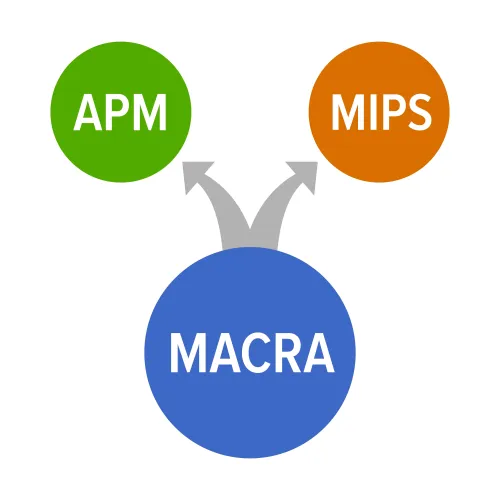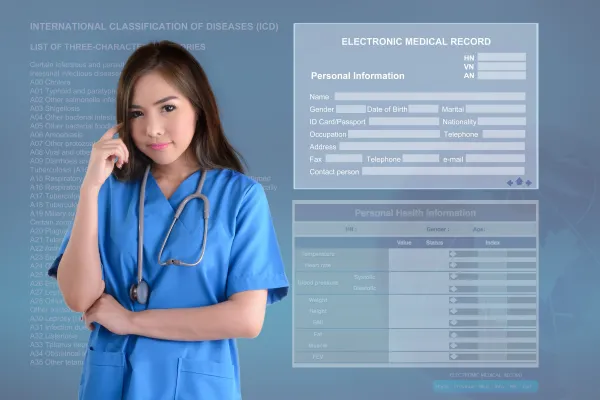Prepare Now for Possible MIPS Low-Volume Threshold Changes in 2018 and Beyond

Small-Practice Part B providers find relief under the QPP proposed rule. If you’ve just wrapped your head around the 2017 MIPS mandates, you’re not alone. A new MACRA Quality Payment Program proposed rule for 2018, however, suggests that you shouldn’t get comfortable with the current terms just yet — and on the upside, the new proposals offer assistance and reduced measures for Medicare Part B clinicians struggling with quality reimbursement changes. Background: Last month, CMS offered up new MACRA guidelines under its proposed rule for 2018. After sifting through a plethora of public commentary on the transition from Medicare’s Sustainable Growth Rate (SGR) system to the new Quality Payment Program (QPP), the new proposal addresses providers’ worries with reduced thresholds and reporting burdens, eased CEHRT mandates, small provider assistance, and more. Read the Federal Register’s proposed rule at: https://s3.amazonaws.com/public-inspection.federalregister.gov/2017-13010.pdf. “We’ve heard the concerns that too many quality programs, technology requirements, and measures get between the doctor and the patient,” said CMS Administrator Seema Verma in a CMS press release from June 20, 2017. “That’s why we’re taking a hard look at reducing burdens. By proposing this rule, we aim to improve Medicare by helping doctors and clinicians concentrate on caring for their patients rather than filling out paperwork.” Name change note: In order to avoid confusion over the changes and to distinguish the 2017 information from the 2018 details, the CMS will now “refer to the second year of the program as ‘The Quality Payment Program Year 2’ rather than ‘pick your pace,’” notes the CMS fact sheet. Are You Subject to MIPS Reporting? One of the major updates under the 2018 proposed rule concerns the Merit-Based Incentive Payment System (MIPS) low-volume threshold. This part of the QPP Year 2 offers relief to Medicare Part B providers struggling with reporting measures. Transition year 2017: CMS guidance is very specific about who can participate in MIPS for 2017. If you bill Medicare Part B more than $30,000 in payments a year and see more than 100 Medicare Part B-enrolled patients annually, then you are required to report measures under MACRA — for CY 2017. However, if you don’t meet this year’s low-volume threshold, you are exempt from reporting for 2017 and can avoid the 4 percent penalty to your reimbursements paid out in 2019. 2018 update: Under the QPP Year 2 proposed rule, the low-volume threshold would be increased, easing the burden substantially. To be subject to MIPS in 2018, the proposal suggests 200 Medicare Part B beneficiaries or $90,000 in Part B allowed charges be the new threshold. Mixed reviews: With the low-volume threshold for MIPS increased, many eligible clinicians required to report in 2017 will not meet the standards for 2018 reporting. One expert weighs in with a warning. “The increase of the threshold for the low-volume exclusion will have a negative impact on the MIPS program,” cautions Mike Schmidt, Director of Certification and Client Success at Eye Care Leaders in Charlotte, North Carolina. “Providers near the edge may be reluctant to take on additional Medicare patients towards the end of the year so as to maintain their exclusion.” He adds, “Any rules which distract physicians from providing high-quality care should be seen as a negative.” The positive: Despite the added confusion with the threshold increase, CMS did respond to the public outcry instead of steamrolling over a year’s worth of providers’ complaints, adjusting the QPP Year 2 accordingly. “It shows that CMS is continuing to listen to feedback from providers about the burdens individual and small groups related to the payment reform have,” maintains attorneys Benjamin Fee, Esq. of Dorsey and Whitney LLP. in the Des Moines, Iowa office. Small, rural, and underserved providers’ voices were heard and the proposed rule is a result of that. And “while CMS estimates that 134,000 additional clinicians will be excluded from MIPS as a result of the increased threshold levels, it also estimates that 65% of Medicare payments would still be captured under MIPS,” Fee explains. Note These New Developments For this transition year 2017, eligible Medicare Part B clinicians are required to meet both the revenue ($30,000) and patients (100 Part B beneficiaries) thresholds or risk exclusion from MIPS — but new guidance from CMS suggests it’s willing to bend this past condition. New deal: “Interestingly, CMS has proposed to allow clinicians or groups to potentially opt-in to MIPS beginning in performance year 2019 even if the clinician or group does not meet both the low-volume threshold components,” notes attorney Alissa Smith, Esq. of Dorsey and Whitney in the Des Moines, Iowa office. This is great news for clinicians or groups who’d like to participate but only satisfy one of the threshold requirements. “CMS is also proposing to potentially add a third component based on the number of Part B items or services provided,” Smith adds. Long-term goal: Taking the stakeholders’ wants and needs into consideration sparks interest in the new reimbursement models as well as promoting the ideals ingrained in the system: value and quality. “Long-term, CMS wants to increase the number of clinicians subject to MIPS or participating in an advanced APM,” says Smith. “And that is not going to change absent legislative intervention.” Resource: To review the CMS factsheet on the CY 2018 updates to the Quality Payment Program, visit https://qpp.cms.gov/docs/QPP_Proposed_Rule_for_QPP_Year_2.pdf.




